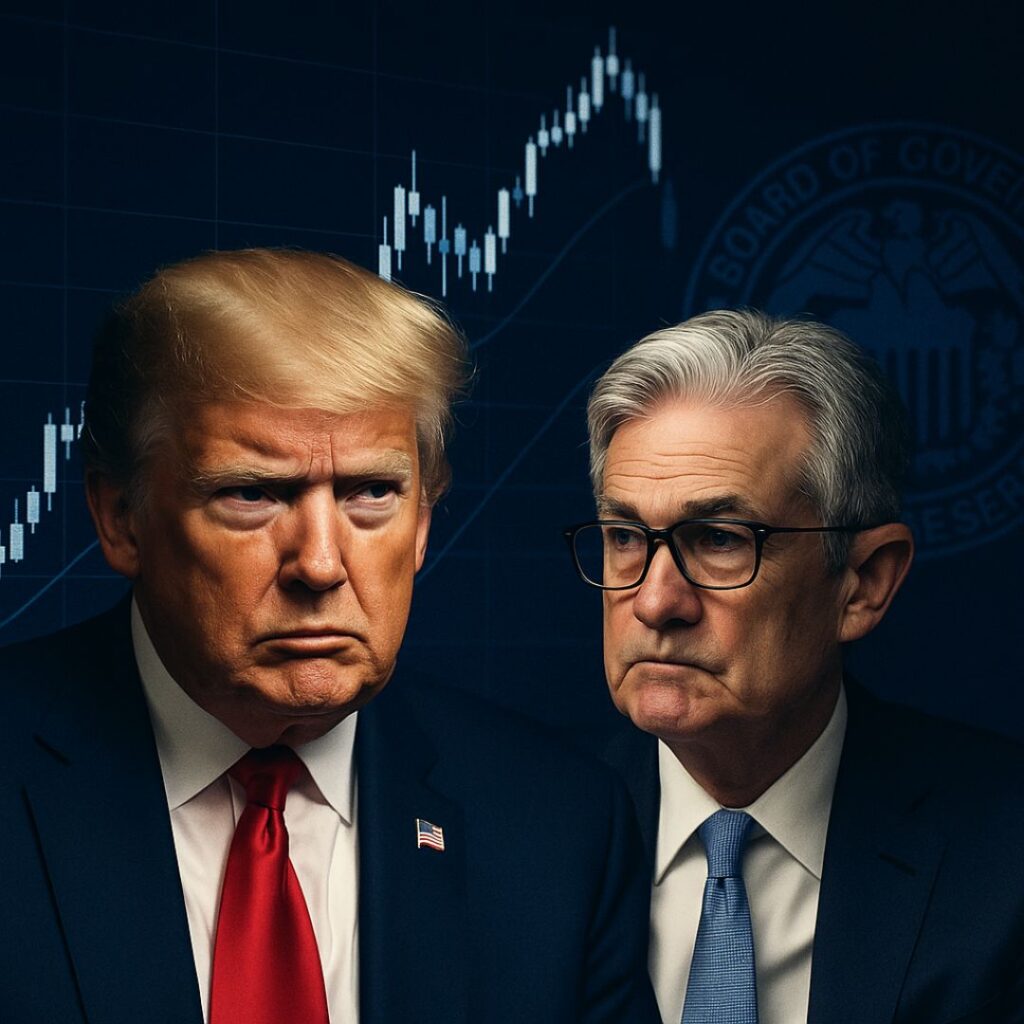When the Fed bends to politics, inflation bends everything else.
Can Trump Force Powell to Cut Rates? Not Exactly.
Tension between former President Trump and Federal Reserve Chair Jerome Powell has resurfaced. Trump wants lower interest rates. Powell won’t budge. And the debate has real consequences for markets, inflation, and U.S. debt.
- Trump appointed Powell in 2017, but calls him a “major loser” for keeping rates high
- Interest rates sit at 4.25%–4.5%. Powell says inflation risks remain
- Trump wants cuts to stimulate growth and refinance national debt
- The Fed is independent; the president cannot directly order or fire the chair
- Attempts to politicize the Fed have historically triggered inflation and market panic
- Powell’s term runs through May 2026, with legal protections reinforced by precedent
Trump’s argument is strategic: cutting rates could ease U.S. debt interest (projected to reach 5.4% of GDP by 2055) and offset economic pressure from his newly reimposed tariffs. But the Fed’s mandate is clear – target 2% inflation and stable employment, regardless of politics.
In May 2025, Powell held firm despite Trump’s pressure during a White House meeting. Markets reacted instantly: the S&P 500 fell, yields rose, and fears of Fed interference resurfaced.
Consequences for Your Wallet and the Country
If political pressure starts dictating rate policy, expect instability. Erratic inflation, investor distrust, and higher borrowing costs across the board. Legal precedent protects the Fed for a reason. When Nixon pushed for low rates in the 70s, the result was stagflation and collapse in credibility.
Powell’s resistance isn’t personal. It’s structural. As one quote from Fit & Free puts it: “You don’t lead outcomes until you lead yourself.” The same principle applies to institutions. Strong systems outlast strong opinions.
The Fed’s job is to steady the ship. Even when politics rocks the deck.

